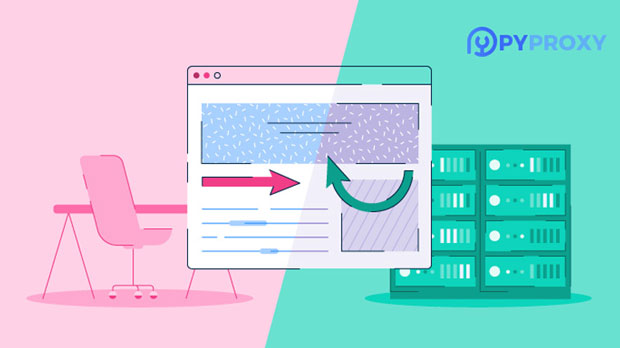Accessing YouTube through a proxy server may sometimes result in reduced video quality. This issue arises due to several factors related to the nature of proxy servers, internet speed, geographical location, and compression methods. A proxy server acts as an intermediary between the user and the internet, routing traffic through a different server that may introduce delays or limitations. These factors can lead to slower loading times, buffering issues, and, consequently, a drop in video resolution. 1. How Proxy Servers WorkA proxy server functions as a middleman between your device and the website you're accessing. When you send a request to access a site, the proxy intercepts this request and then forwards it to the destination. Upon receiving the data, the proxy sends it back to you. While this provides anonymity and can bypass geographical restrictions, it can also introduce several complications, especially when it comes to streaming platforms like YouTube.When accessing YouTube directly, your device communicates with the nearest server that can provide the requested content. However, when using a proxy, the request may have to travel through additional servers, often located in different regions. This added distance and the way the proxy handles the data can lead to slower speeds and reduced bandwidth, which directly impacts video quality.2. Latency and Bandwidth LimitationsOne of the most common issues when accessing YouTube through a proxy is increased latency. Latency refers to the delay in data transmission between your device and the server. With proxies, this delay can be significant, especially if the proxy server is located far from your geographical location or is overloaded with requests from multiple users.Higher latency can cause a delay in buffering, leading to a drop in video quality. YouTube, like many other streaming platforms, dynamically adjusts the resolution of videos based on your internet speed. If your connection is slow due to high latency, YouTube will automatically lower the video quality to ensure smoother playback, which results in a less clear viewing experience.3. Geographical Restrictions and Server LocationAnother factor that can affect video quality when using a proxy is the geographical location of the proxy server. If you are using a proxy server located far from your actual location, the route that the data must take to reach you becomes longer, introducing more potential for slowdowns and increased latency.Additionally, YouTube may serve videos in lower resolutions if it detects that the user is connecting from a region with known bandwidth limitations or geographical restrictions. This is particularly relevant in regions where high-speed internet is less accessible, or where proxy servers are being used to access content restricted in certain countries.4. Compression and Quality DegradationSome proxy servers perform data compression to reduce the amount of data being transferred. While this can improve loading speeds in certain cases, it can also negatively impact video quality. Compression algorithms reduce the amount of data transmitted by discarding some of the finer details of the video file, resulting in a lower resolution or pixelated image.Streaming platforms like YouTube already compress videos to optimize them for web use, but when a proxy server adds another layer of compression, it can further degrade the quality of the video. This is especially noticeable when watching videos in high definition (HD) or 4K, where any compression artifacts can be more apparent.5. Proxy Server OverloadProxy servers are not infallible, and they often experience high traffic volumes. If a proxy server is overloaded, the quality of your connection can suffer, leading to slower speeds and degraded video performance. In such cases, the proxy may throttle bandwidth or prioritize other types of traffic, leaving video streaming at a lower priority.This bandwidth throttling is often invisible to the user, but it can lead to a noticeable drop in video quality. Instead of streaming in HD or higher resolutions, YouTube may automatically switch to a lower resolution, such as 480p or 360p, to ensure that the video can load properly despite the limited available bandwidth.6. Internet Speed and Proxy Connection TypeThe type of proxy connection you use can also play a significant role in the quality of your YouTube videos. For example, a public proxy server, which is often used for bypassing regional restrictions, may have slower speeds due to its shared nature. These public proxies are often used by many people simultaneously, which can cause congestion and slow down data transmission.In contrast, a dedicated proxy server that is privately owned and optimized for video streaming might offer better performance. However, even private proxies can suffer from occasional slowdowns if the server is located far from your region or if the server’s bandwidth is limited.7. Proxy and Video Streaming ServicesStreaming services like YouTube often employ sophisticated algorithms to detect and adjust video quality based on the available internet speed and connection quality. When you use a proxy, YouTube may detect inconsistencies in the connection and lower the video quality as a precautionary measure to prevent buffering issues.Additionally, YouTube may not be able to provide the highest resolution of video if it detects that the connection is coming through a proxy, especially if the proxy is known to reduce performance. As a result, even if your internet connection is fast, YouTube may still default to a lower resolution, such as 720p or 480p, due to the proxy server’s limitations.8. Conclusion: How to Improve Video Quality When Using a ProxyWhile accessing YouTube via a proxy can lead to a decrease in video quality, there are ways to mitigate these issues. First, using a reliable and fast proxy server can help reduce latency and avoid bandwidth throttling. Second, using a server that is geographically closer to you can minimize the distance that data needs to travel, reducing the chance of slowdowns and buffering.If video quality is a priority, consider using a VPN instead of a proxy server. VPNs typically offer faster and more secure connections, with less chance of compromising video quality. Additionally, you may want to check your internet connection speed regularly to ensure that you are receiving adequate bandwidth for streaming high-quality content.In summary, while using a proxy server to access YouTube may be convenient for bypassing restrictions, it often results in lower video quality due to latency, bandwidth limitations, compression, and server overloads. By choosing a better proxy or switching to a VPN, you can improve your viewing experience.
Jun 26, 2025






















































